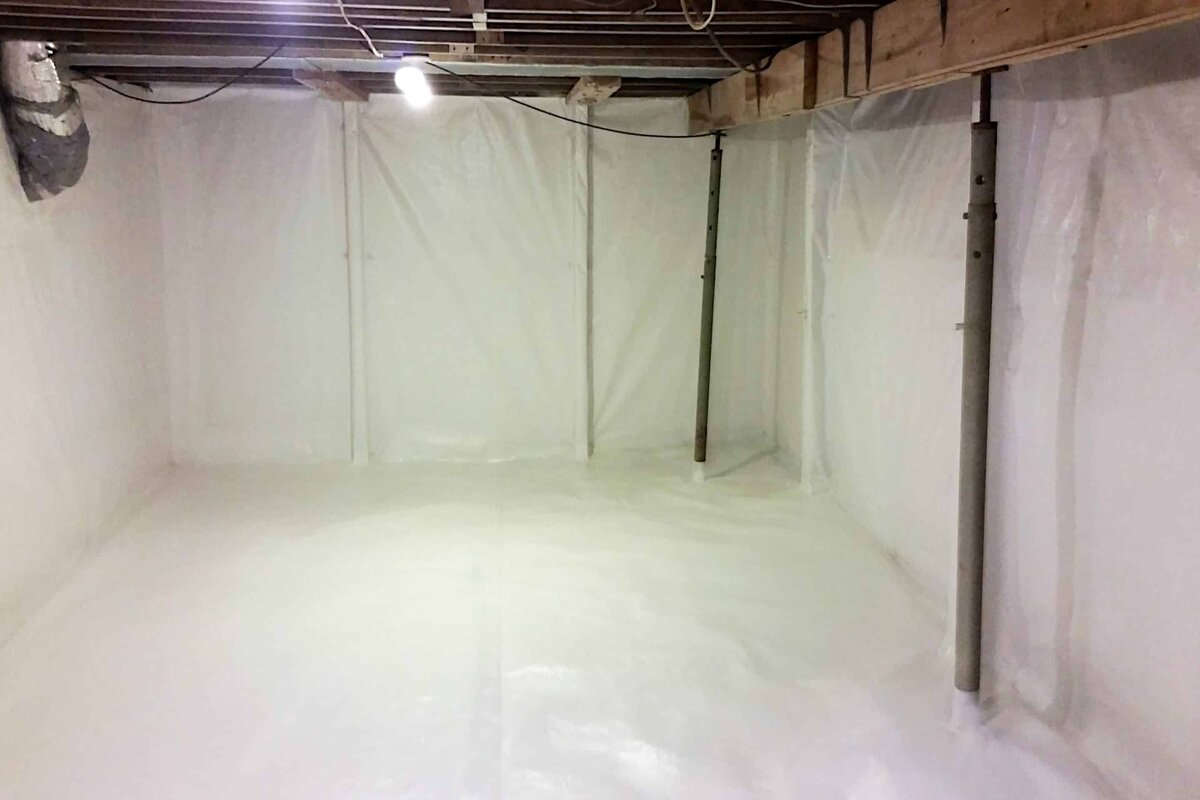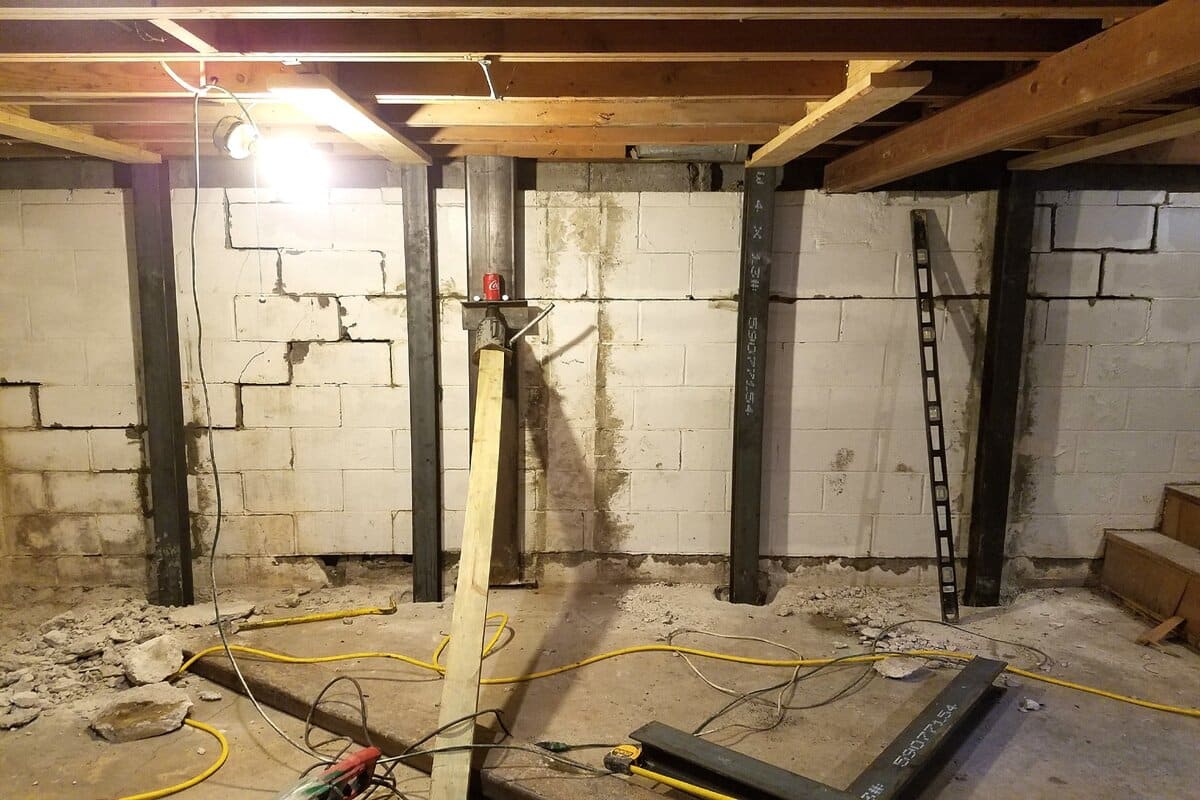When heavy rains or melting snow start soaking the ground around your home, your basement can quickly become vulnerable to leaks and flooding. Water intrusion is one of the most common and costly issues homeowners face, and the best way to avoid major damage is by taking preventative steps before the problem gets out of control. Let’s explore how to keep your basement dry and prevent moisture from seeping into your home.
Ensure Proper Downspout Functionality
One of the first things we recommend checking is your downspouts. If water isn’t being properly directed away from your home, it can quickly saturate the soil around your foundation, increasing the risk of basement flooding.
- Extend downspouts at least 6 to 10 feet away from your foundation to prevent water pooling around the base of your home.
- Observe your downspouts during rainfall to see how they’re performing. A simple walk outside while it’s raining can provide valuable insight into whether adjustments are needed.
- Check for blockages or damage that could prevent proper drainage.
Even small adjustments to your downspouts can save you from major headaches and expensive repairs down the road.
Maintain Window Wells
Window wells are another potential weak point when it comes to basement waterproofing. If your window wells have sunk or weren’t properly secured to the foundation, they can create a direct entry point for water.
- Inspect your window wells regularly to ensure they are properly attached to your foundation.
- If they have sunk over time, raising or replacing them may be necessary to improve drainage.
- Ensure proper grading around window wells to prevent water from pooling.
Ignoring window well maintenance can lead to unnecessary water damage, so it’s worth keeping an eye on these areas.
Understand and Manage Hydrostatic Pressure
Hydrostatic pressure is a significant concern for homeowners with basements. When the ground around your foundation becomes saturated with water, the pressure builds up and forces moisture through cracks and weak points.
- Cracks in the foundation provide an easy path for water to seep into the basement.
- Water can also enter where the basement floor meets the walls, even if no visible cracks are present.
- Addressing drainage and reducing excess moisture around your home is the key to minimizing hydrostatic pressure.
By controlling water buildup around your foundation, you reduce the chances of pressure-related leaks.
Deal With Neighboring Drainage Issues
Unfortunately, water problems aren’t always caused by your property alone. Sometimes, your neighbor’s drainage—or lack thereof—can be the culprit. If their yard slopes toward yours or they haven’t taken steps to manage water runoff, you could end up with excess moisture collecting around your home.
- Evaluate how water flows from surrounding properties. If water is coming from a neighbor’s yard, it may be worth having a conversation about drainage improvements.
- Consider contributing to drainage solutions. While it may not seem fair, sometimes fixing a neighbor’s drainage problem can save you thousands in basement repairs.
- Check local regulations regarding water runoff responsibilities. Some municipalities may offer guidance or solutions for dealing with neighboring drainage issues.
Water always takes the path of least resistance, so ensuring your entire property—and nearby properties—are properly graded is essential.
The Impact of House Construction on Drainage
The way your home was originally built plays a huge role in water management. When a house is constructed, the foundation hole is dug larger than necessary to allow space for building materials. Once construction is complete, the backfilled soil around the foundation isn’t as compact as the undisturbed ground.
- Loose soil around the foundation can absorb and hold water, making it more likely to seep into your basement.
- Over time, this soil may settle unevenly, creating areas where water naturally collects and pools around the home.
- If your home sits at a lower elevation than surrounding properties, water from other homes and yards can drain toward your basement, increasing the risk of flooding.
This is why proper grading and drainage management are crucial to keeping your basement dry.
Practical Steps to Keep Your Basement Dry
To protect your basement from rain and snow melt, follow these key steps:
- Extend Downspouts: Make sure downspouts discharge water at least 6 to 10 feet from your home.
- Inspect Window Wells: Ensure they are securely attached and draining properly to prevent water intrusion.
- Monitor for Foundation Cracks: Check regularly and seal cracks to prevent leaks.
- Address Neighboring Drainage: Assess how water flows from nearby properties and take action if necessary.
- Understand Soil and Grading Issues: Be aware of how your home was built and whether backfilled soil needs adjustments.
By taking these proactive measures, you can significantly reduce the risk of basement flooding and moisture buildup.
In Summary
To keep your basement dry during rainy and snow melt seasons, it’s crucial to stay ahead of potential water issues with proactive maintenance. Checking your downspouts, ensuring proper grading, and addressing drainage problems early can prevent costly damage.
If water problems persist, professional waterproofing solutions can make all the difference. Contact us at Foundation 1 for expert recommendations and customized solutions to keep your basement dry and your home protected.




